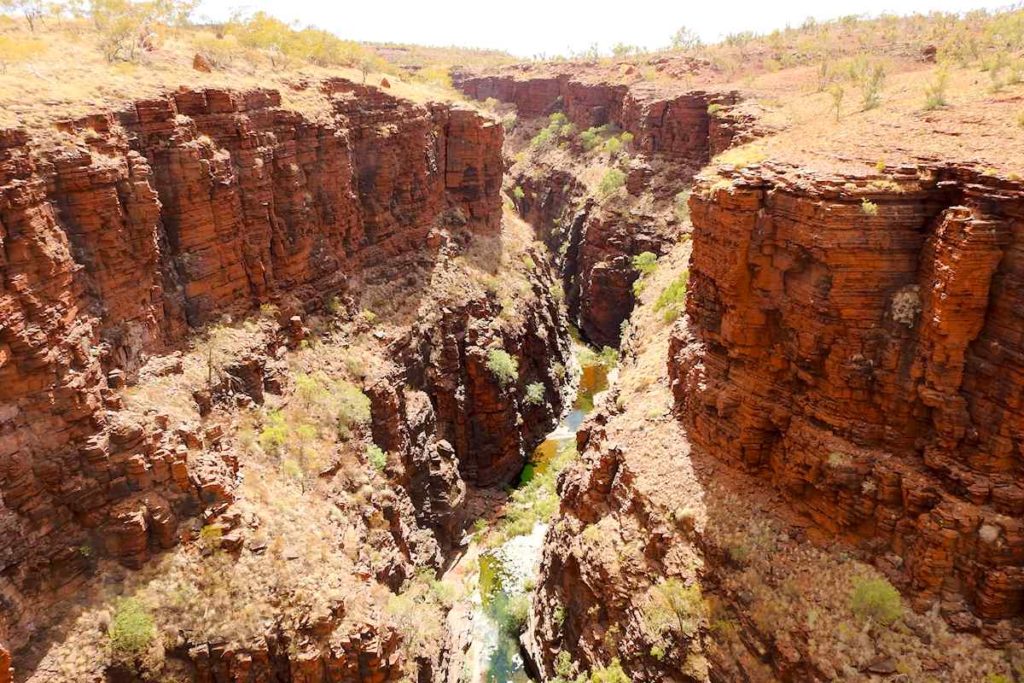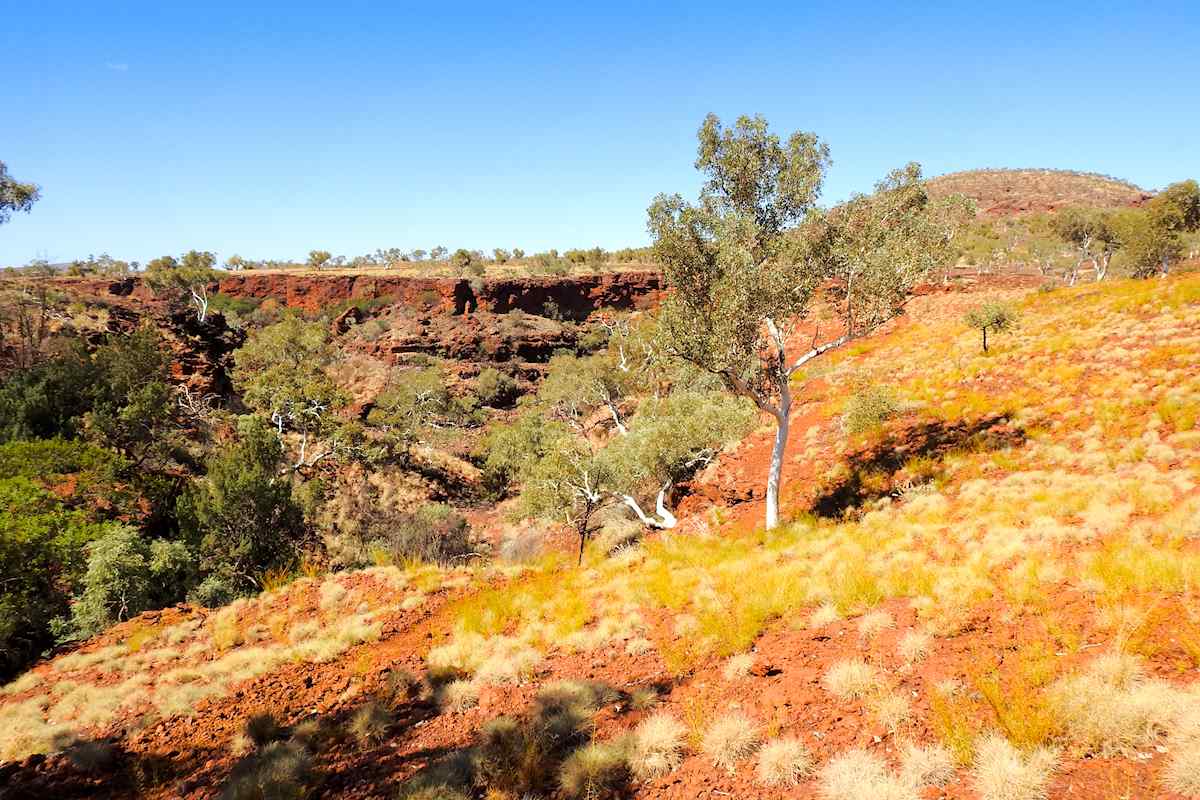Still heading north, I visited Wiluna. This small town is situated on the edge of the Little Sandy and Gibson Deserts.

Like most places out here, it owes its existence to gold, discovered in 1896. At its peak in 1932, the population was 9,000 but today the population varies, with around 200-600 indigenous people living in the town.
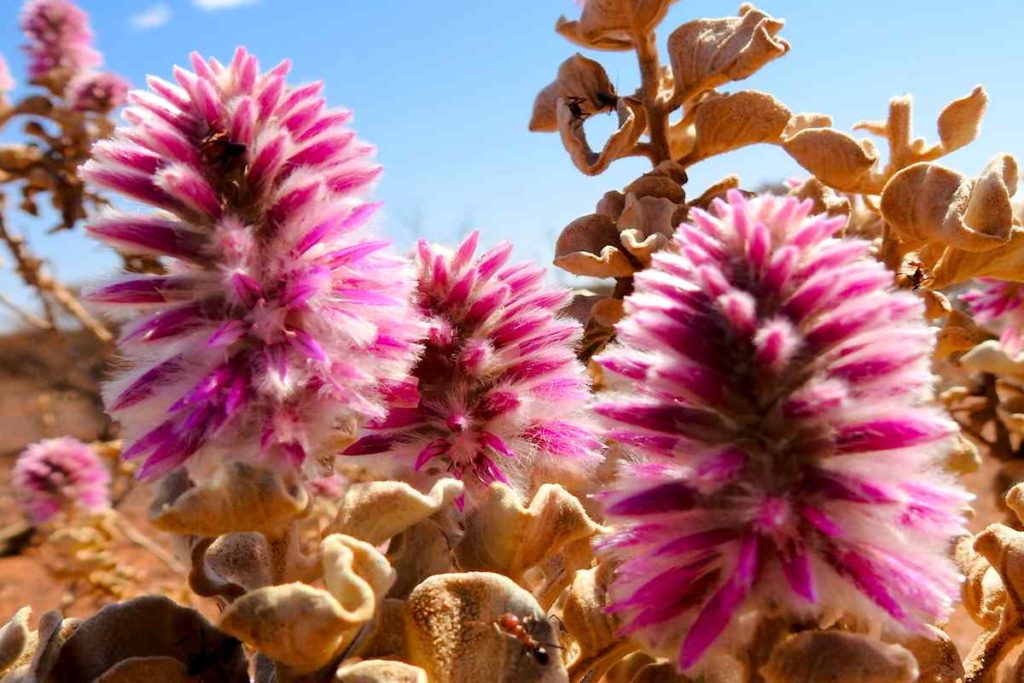
The Last of the Nomads
This statue remembers Warri and Yatungka, who are believed to have been the last of the desert nomads living the traditional indigenous lifestyle. They fell in love in the 1930’s but their love was forbidden under tribal law. Fearing retribution, they ran away into the Gibson Desert, where they lived for decades in isolation, hunting and collecting bush tucker.
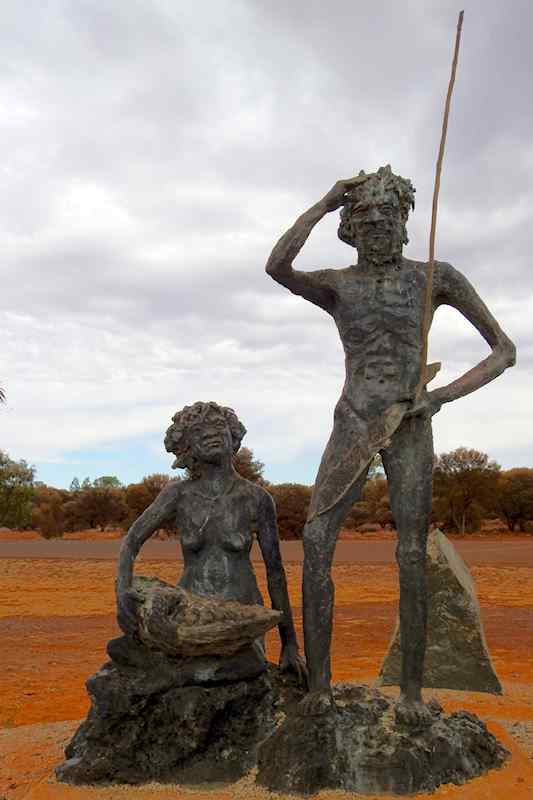
In 1977, a severe drought was gripping this area and the waterholes had dried up. The local Aboriginal elders were concerned and after several weeks of searching, the couple was located in the desert, close to starvation.
Brought back into town, they stayed in Wiluna, where they both died in 1979, within weeks of each other. Their deaths marked the end of a traditional way of life that had existed here for more than 40,000 years…
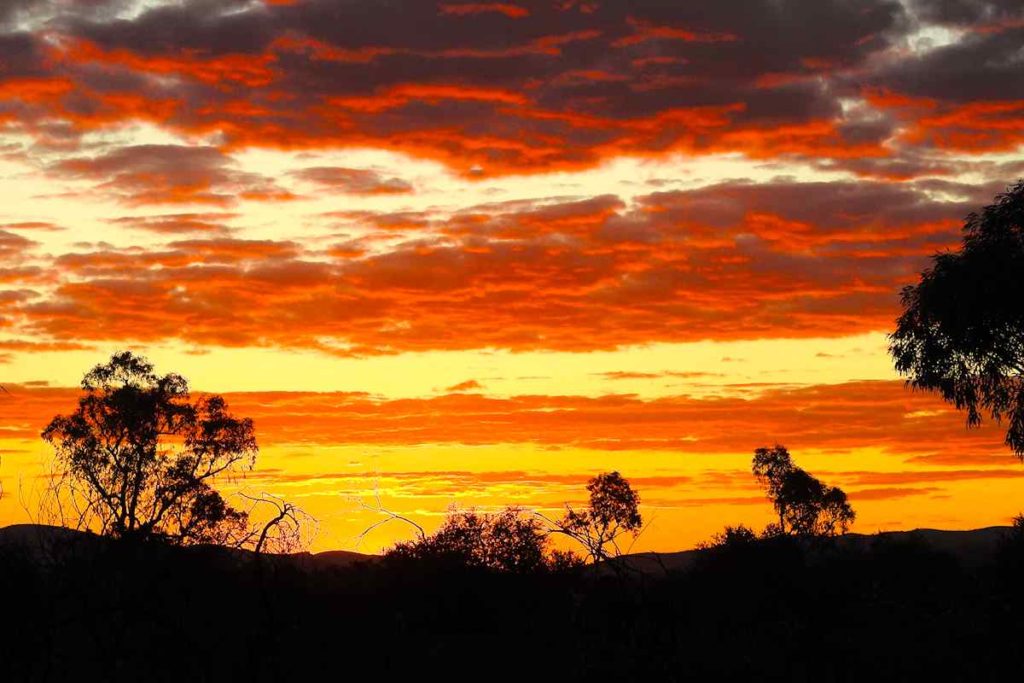
The Pilbara
I crossed the Tropic of Capricorn in the 30th of August. A road sign informed me I was also entering the Pilbara, which is amazing.
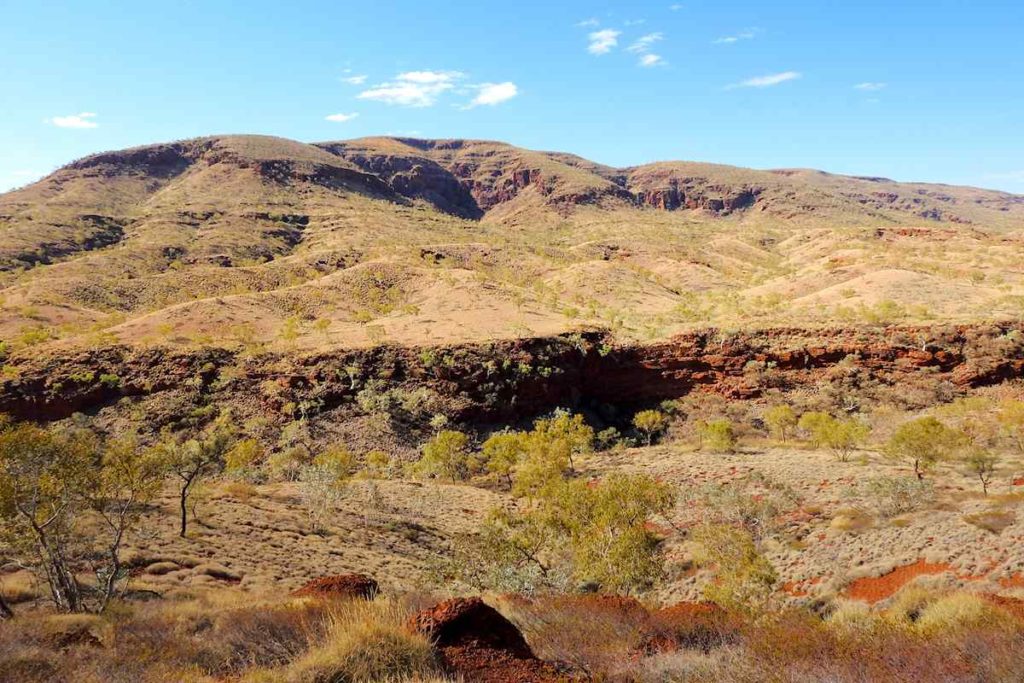
Everything here is really, really BIG. Everything here is really, really RED. The ground, the rocks, the cliffs and the dust are all really, really red!
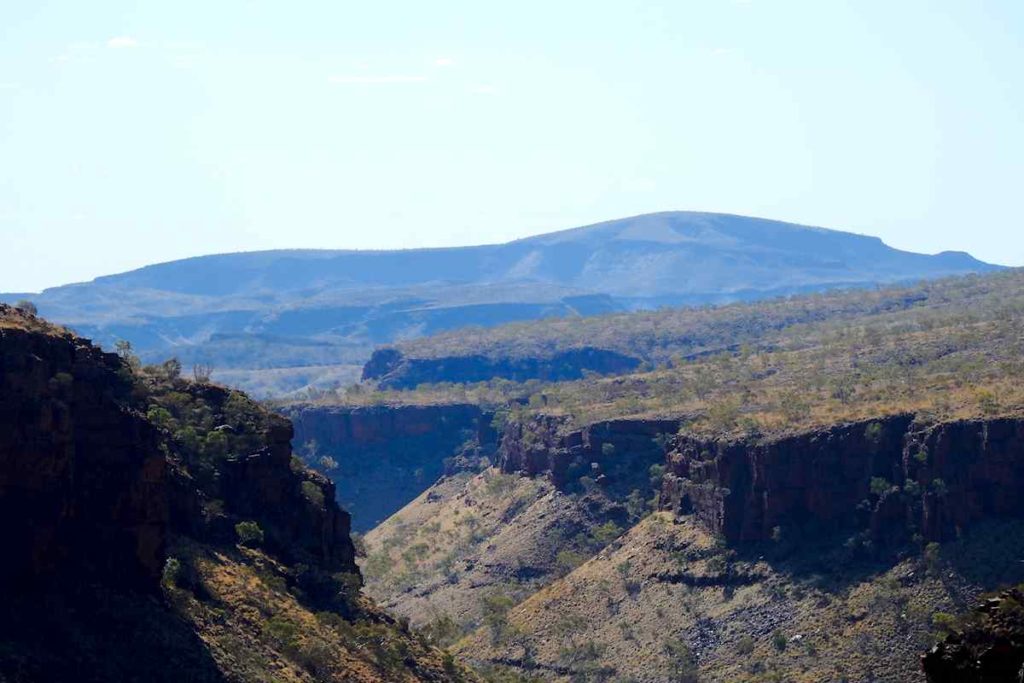
And that red dust certainly gets everywhere! There is actually enough red dust collected in the camper for me to build my very own desert…
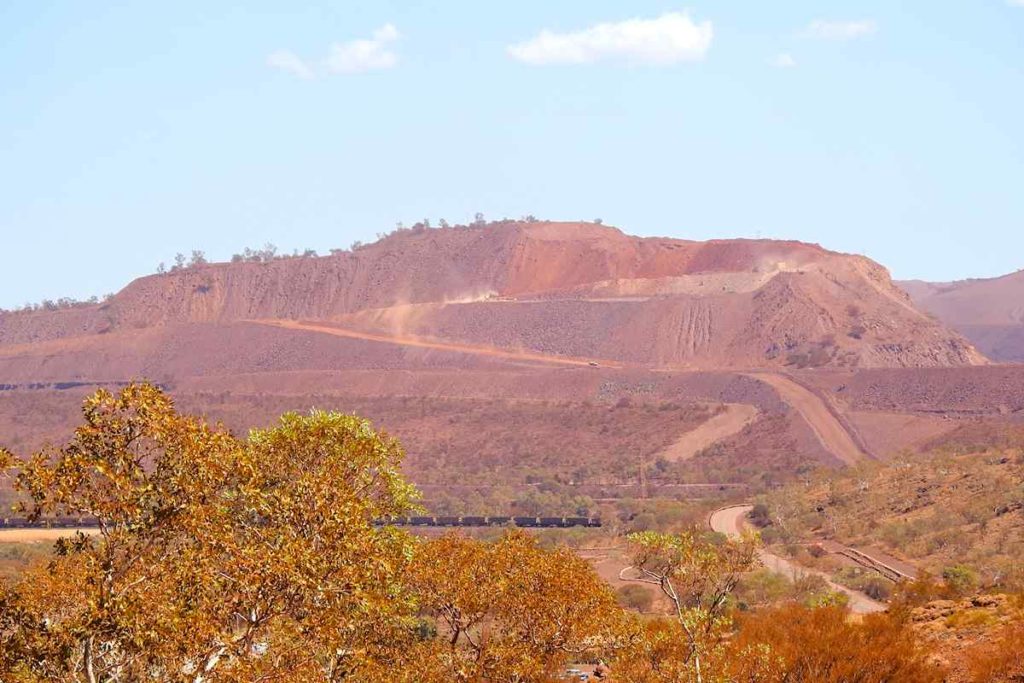
The Pilbara is known for mining and iron ore is the main harvest here; nowhere near as glamorous as gold. But, there are a hell of a lot of mines here, so not all the hills you see are natural.

And you spend much of your time being intimidated by absolutely massive road-trains, often ferrying the colossal equipment that modern mining seems to desire!
Most of the towns here are devoted to mining, and with names like Tom Price, Paraburdoo and Pannawonica, you kind of have to go for a look – how can you not visit a town called Pannawonica?
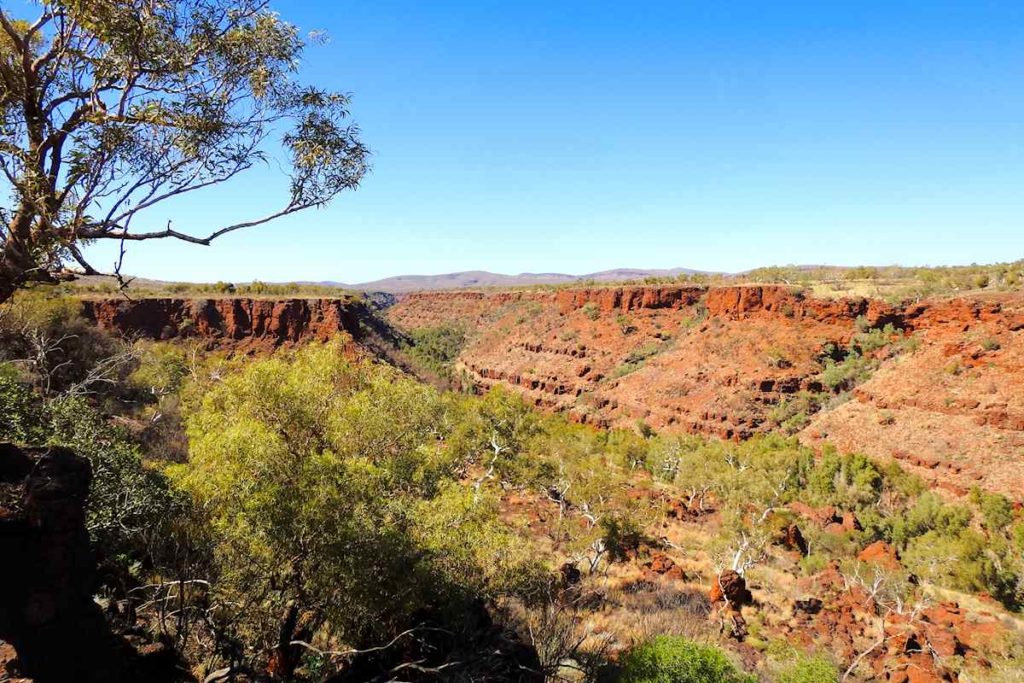
Karijini National Park
A remote and arid park, Karijini National Park sits in the middle of the Pilbara. This is an ancient land; the rocks here are amongst the oldest known on earth.
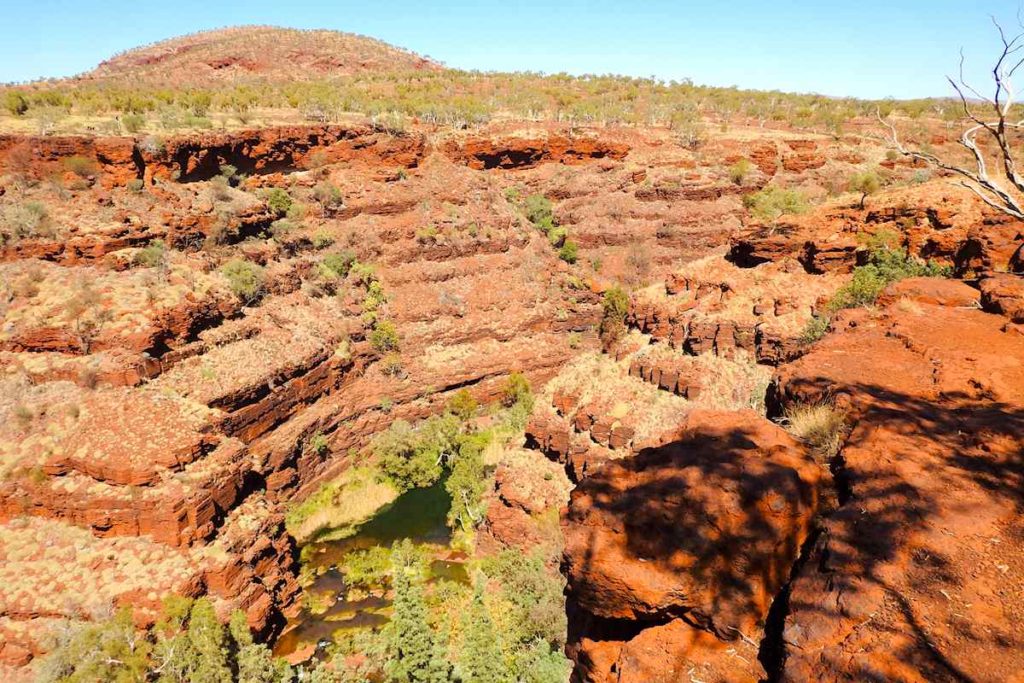
A mere 2,500 million years ago, this land was the bed under a shallow sea, which over millions of years transformed into the mineral rich rocks we see today.
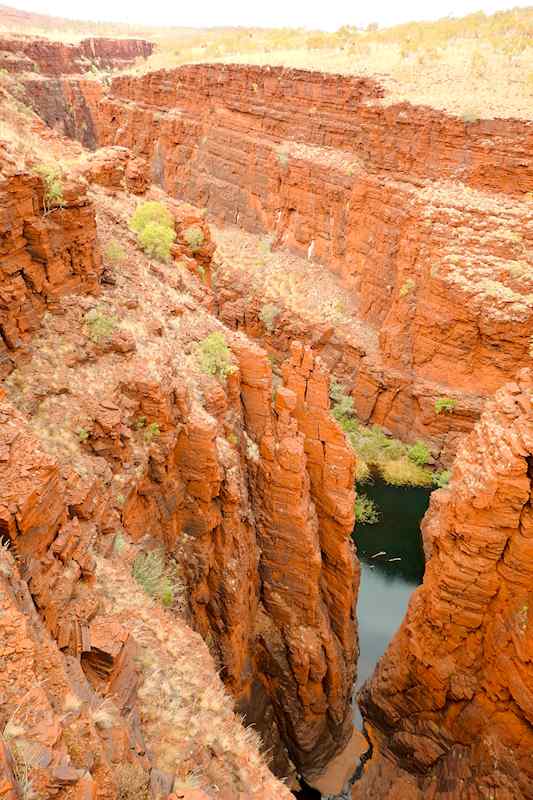
Over time, the land lifted up, the sea retreated and rivers cut down through the rock to form spectacular gorges, some up to 100 metres deep.
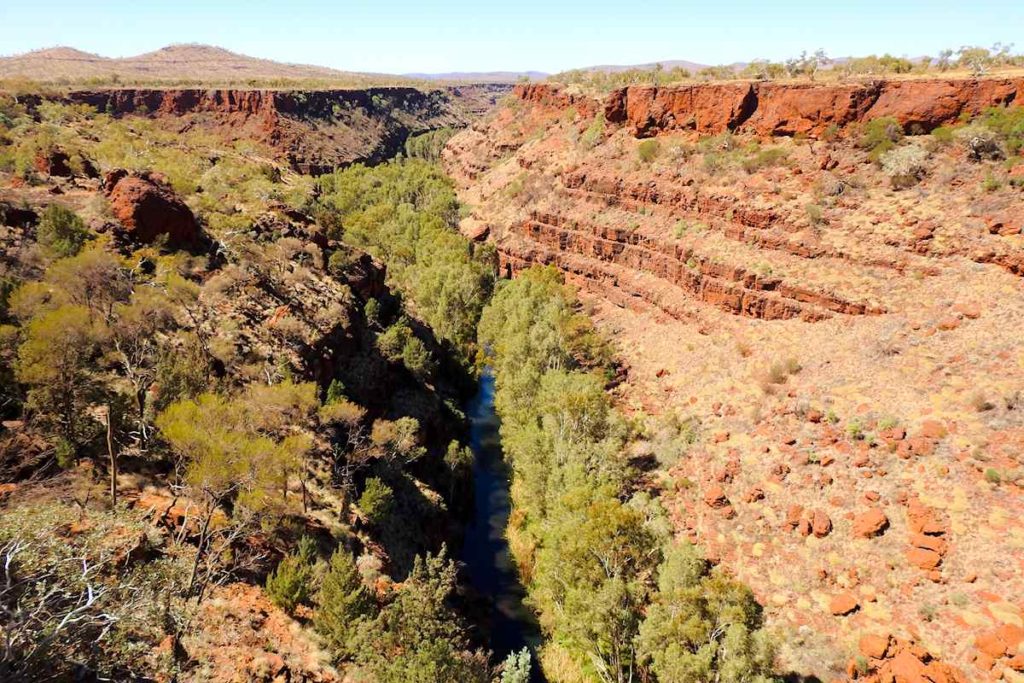
After rain, waterfalls cascade over steep cliffs and flash floods are common. However, when I visited, little rain had fallen, so the waterfalls were fairly tame and the rock pools were a rather unwelcoming green colour.
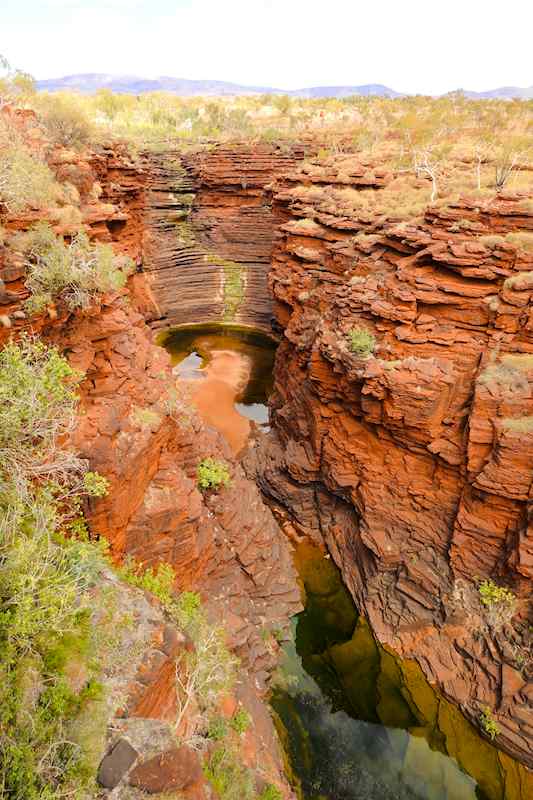
The roads in the park are all dirt and in pretty bad condition when I was there.
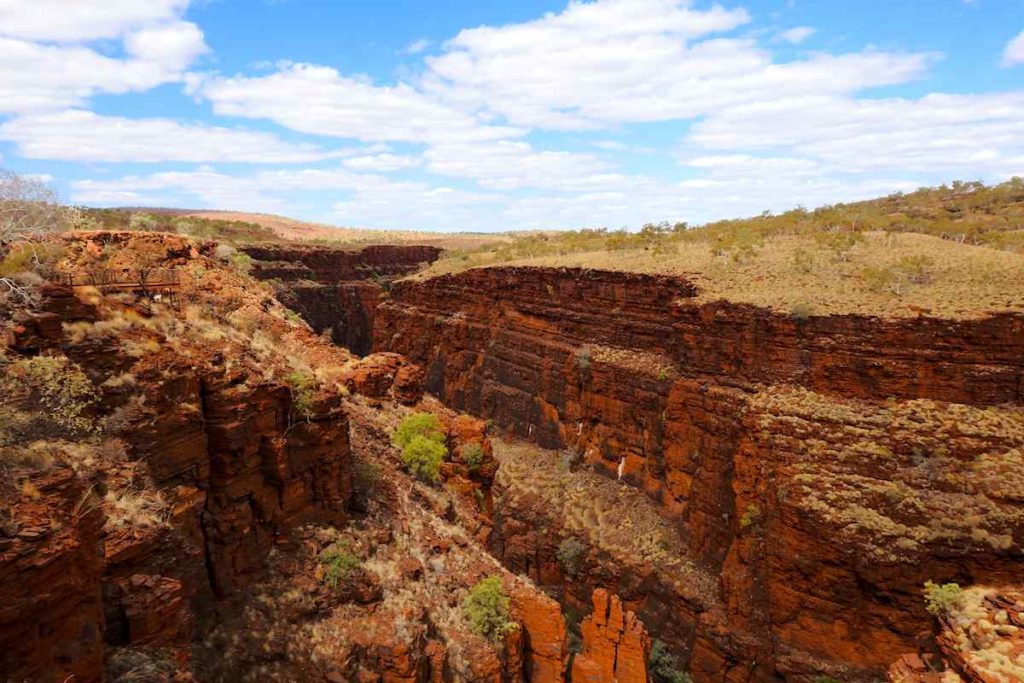
However, it was worth putting up with the incredible jolting of horror corrugations to visit the spectacular gorges that are a highlight of the park.
